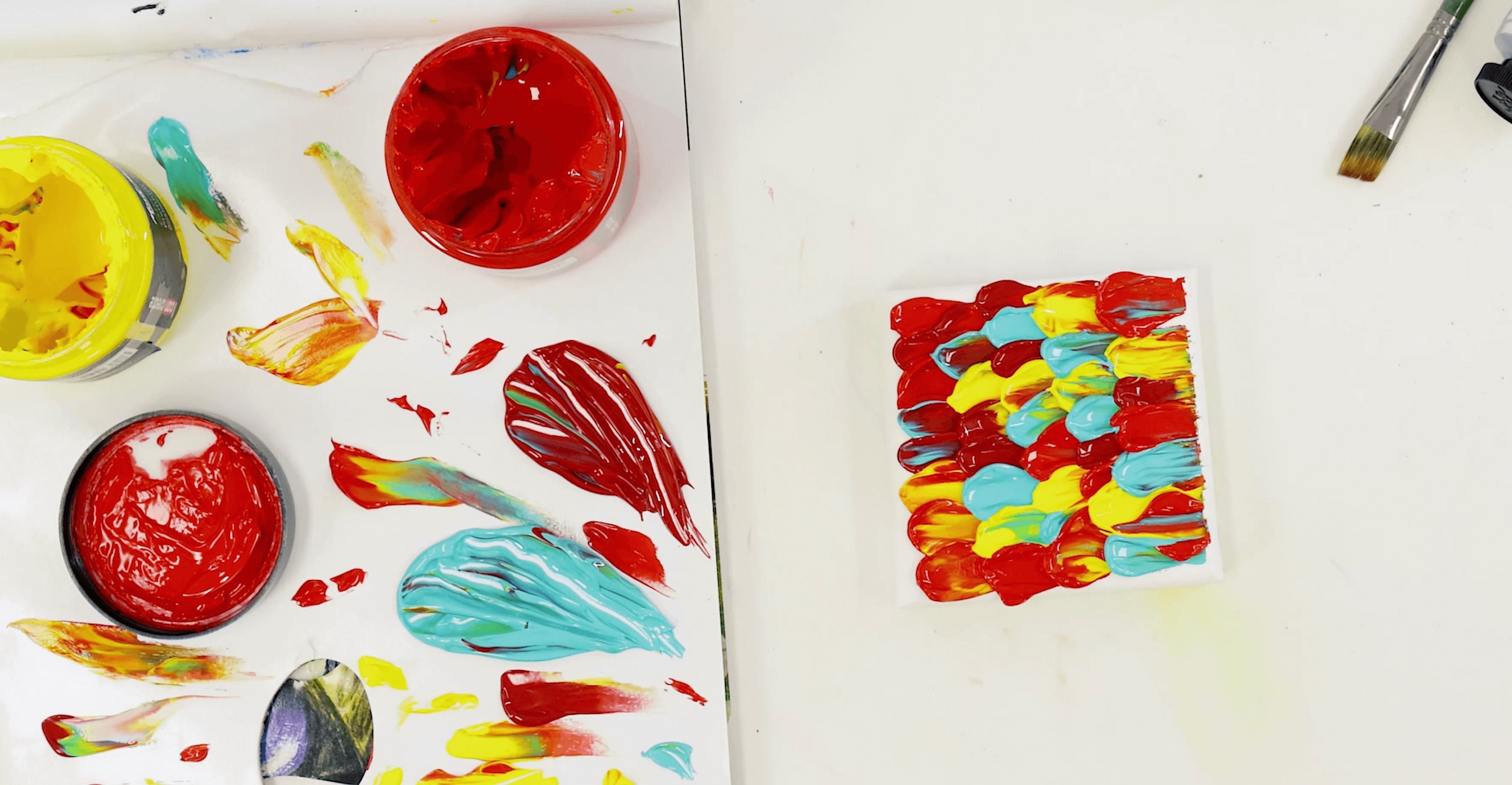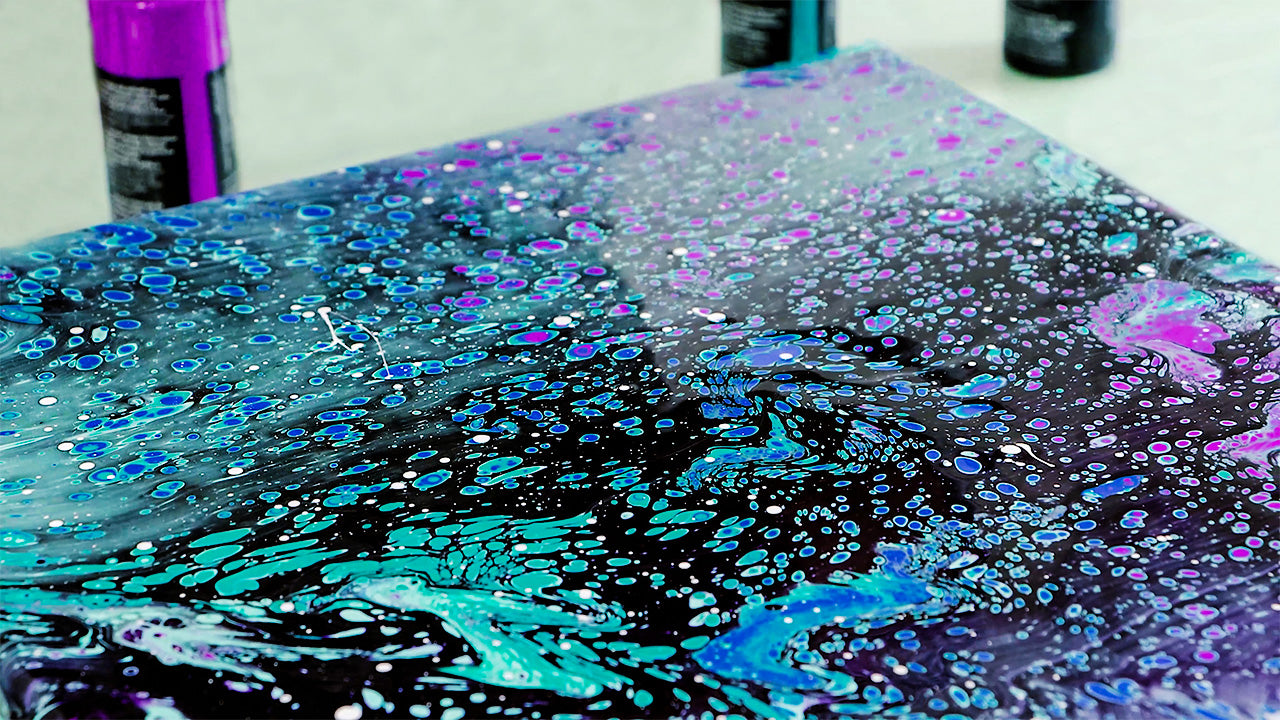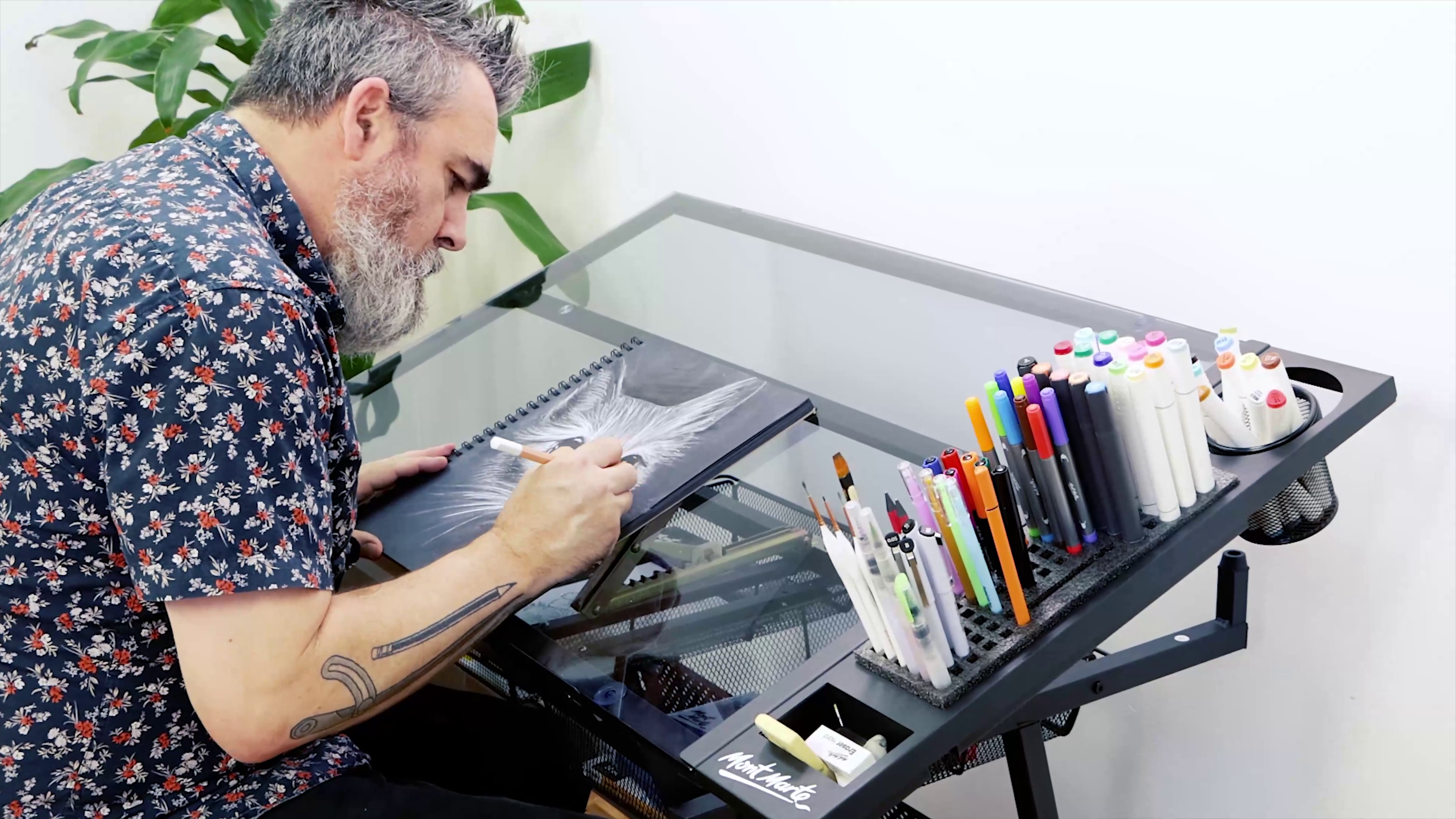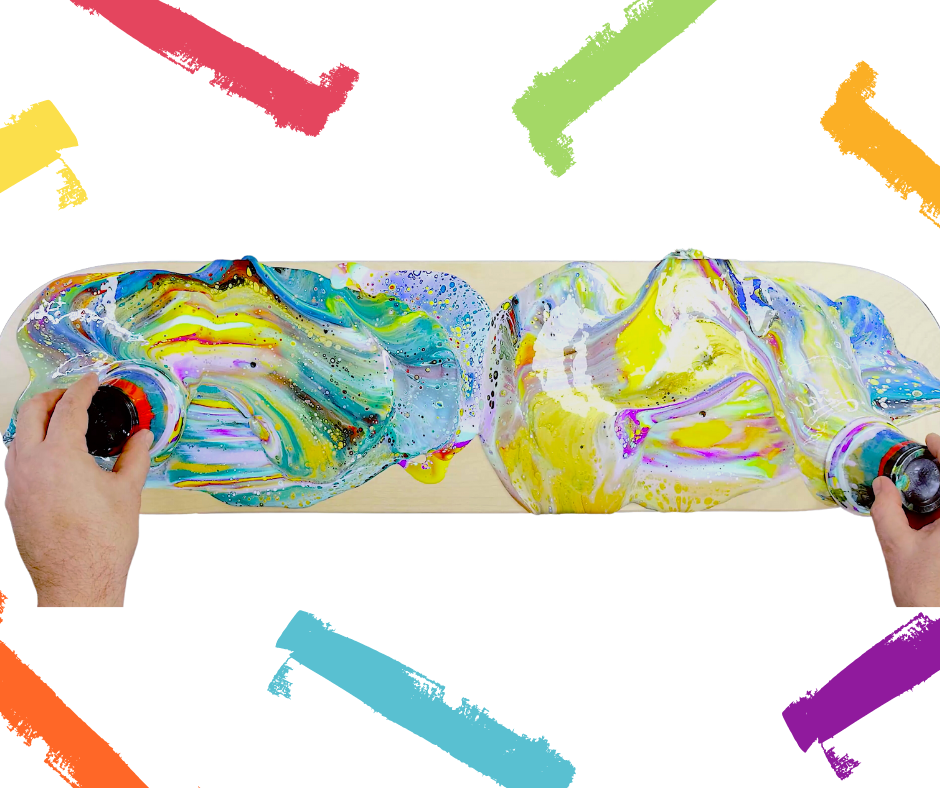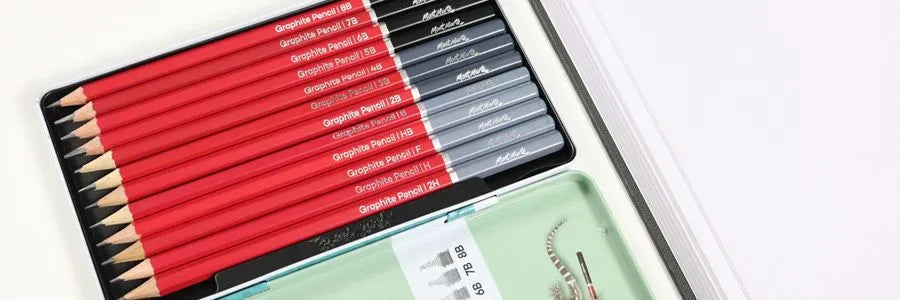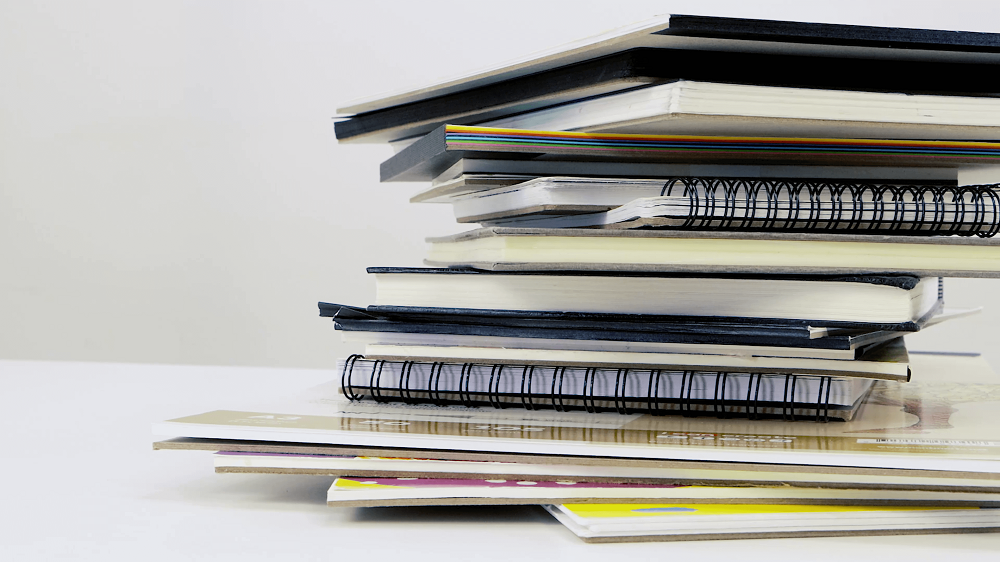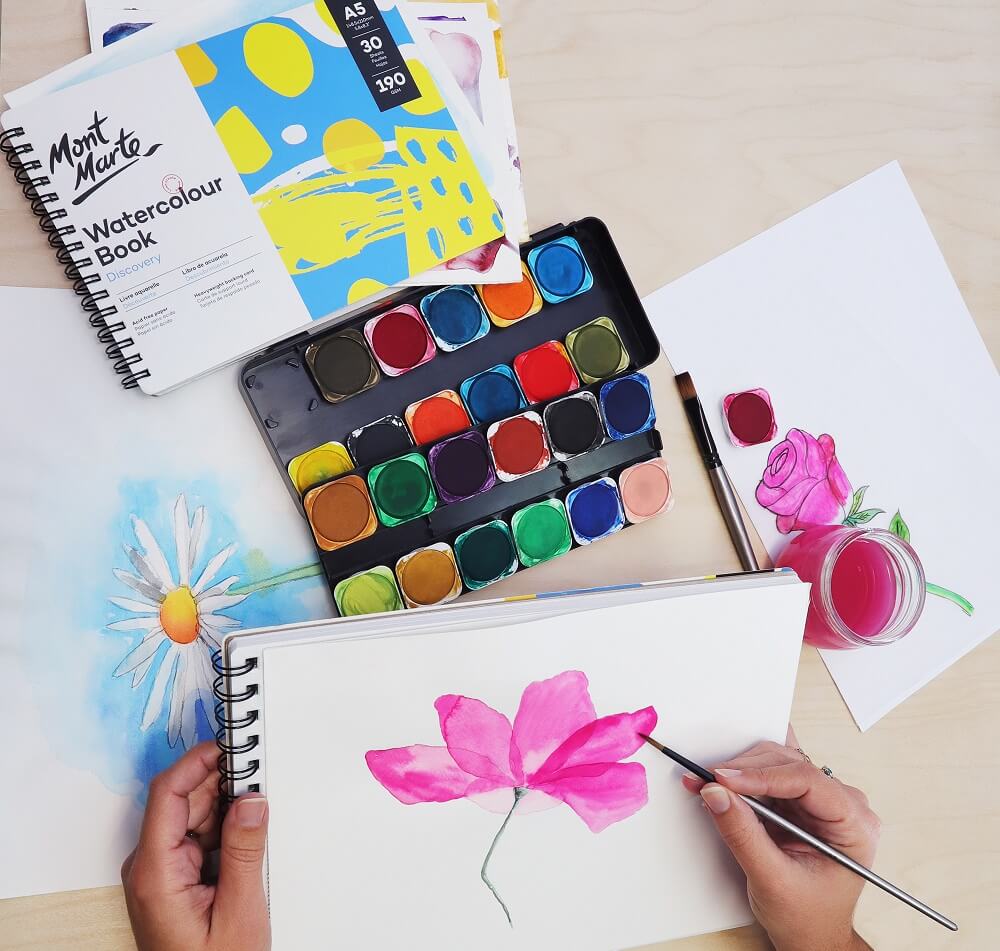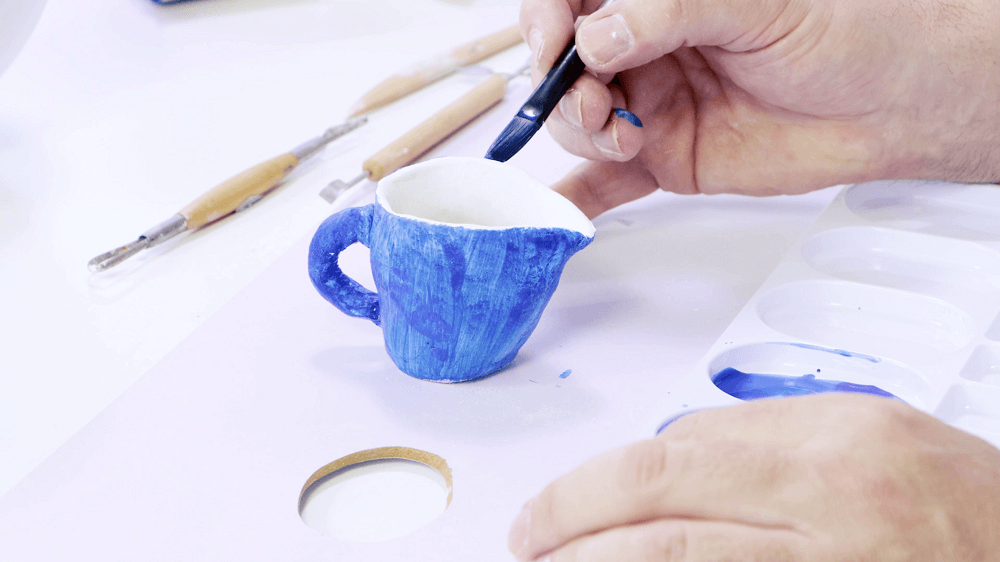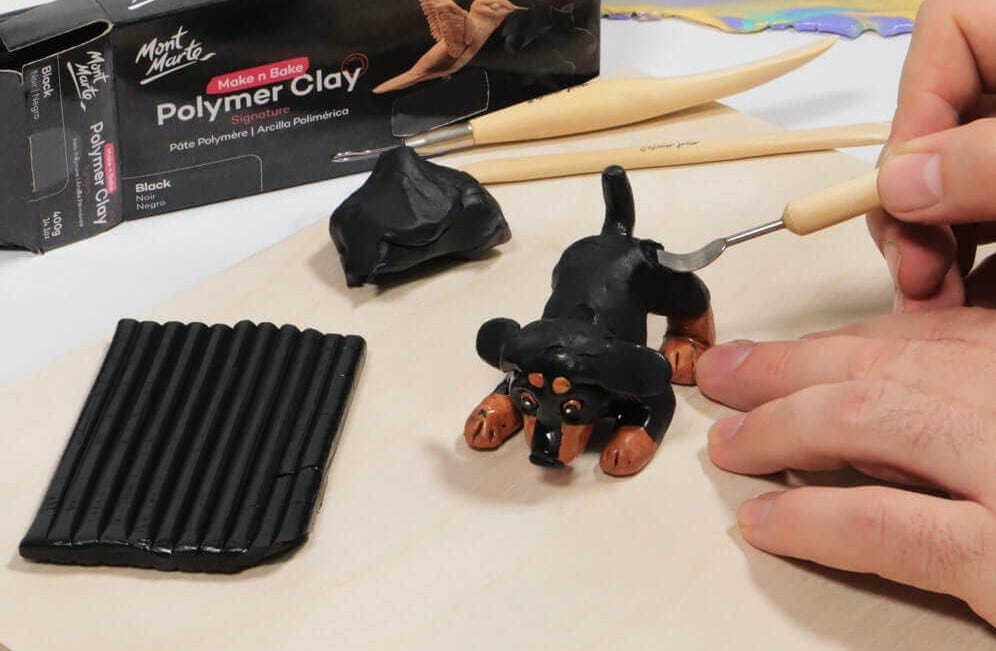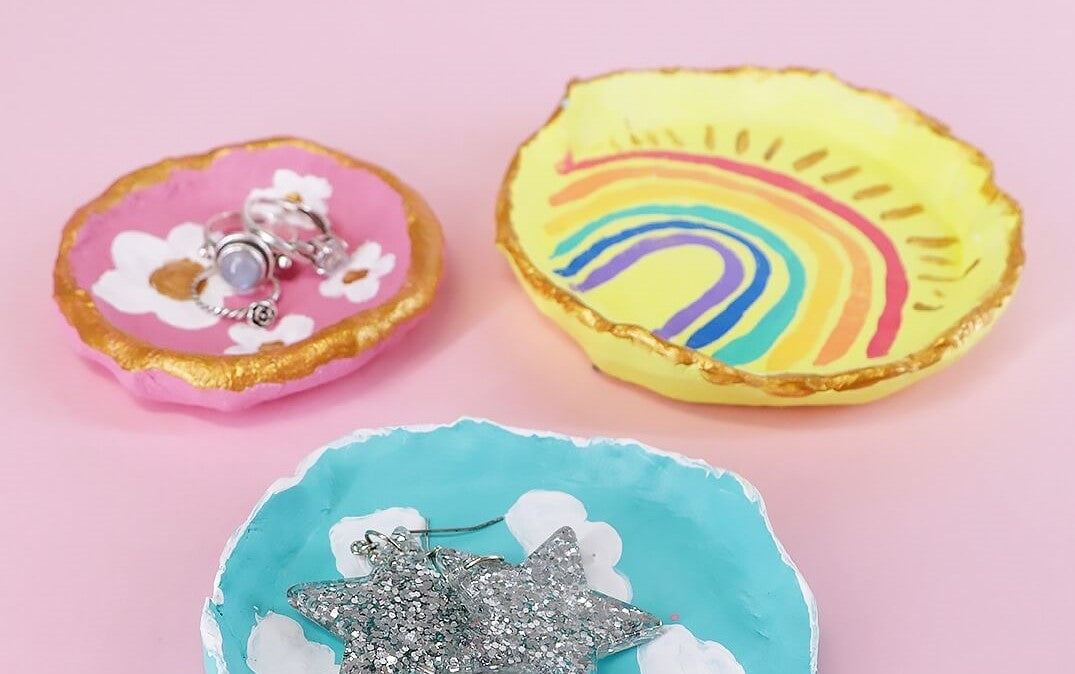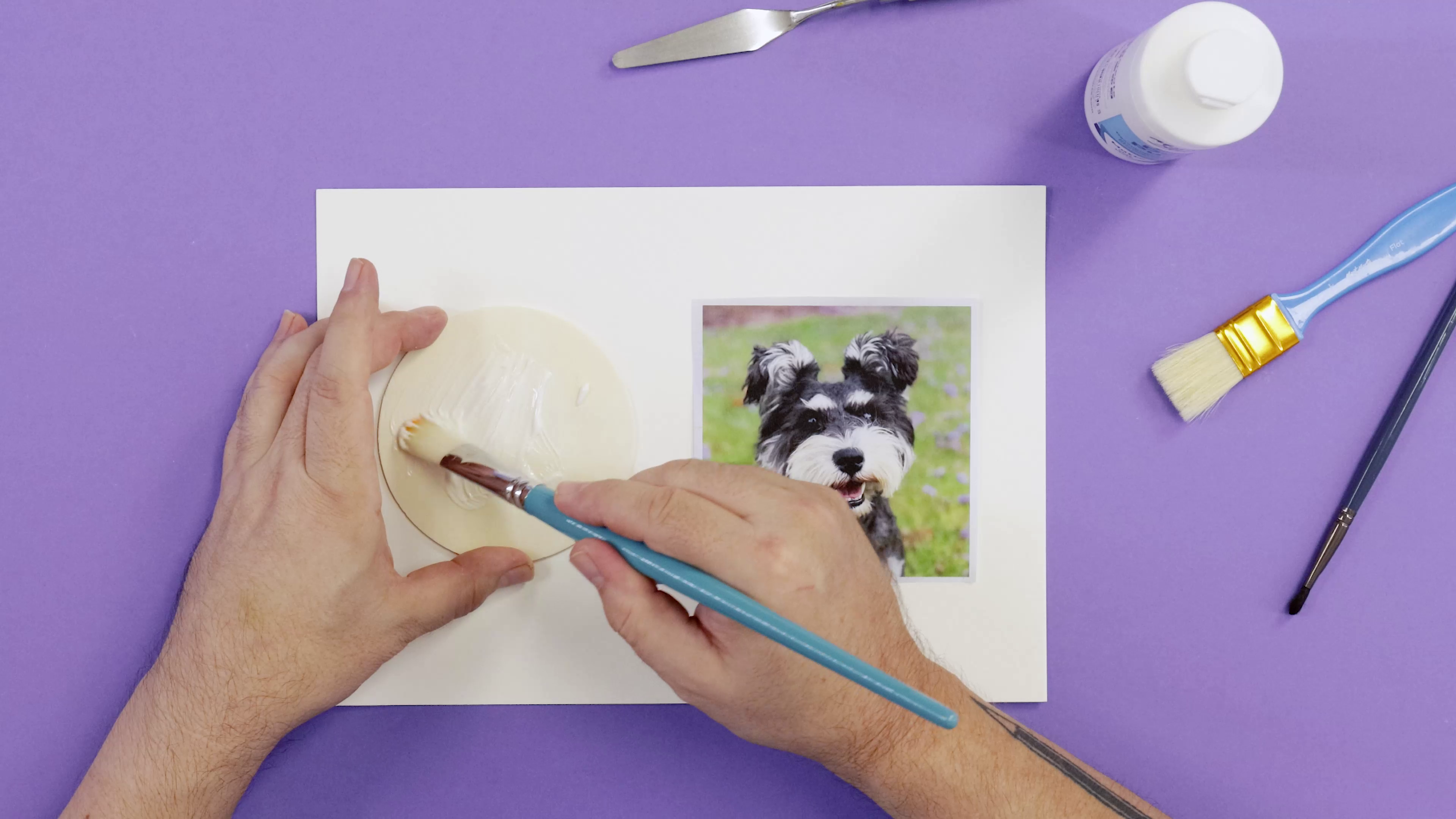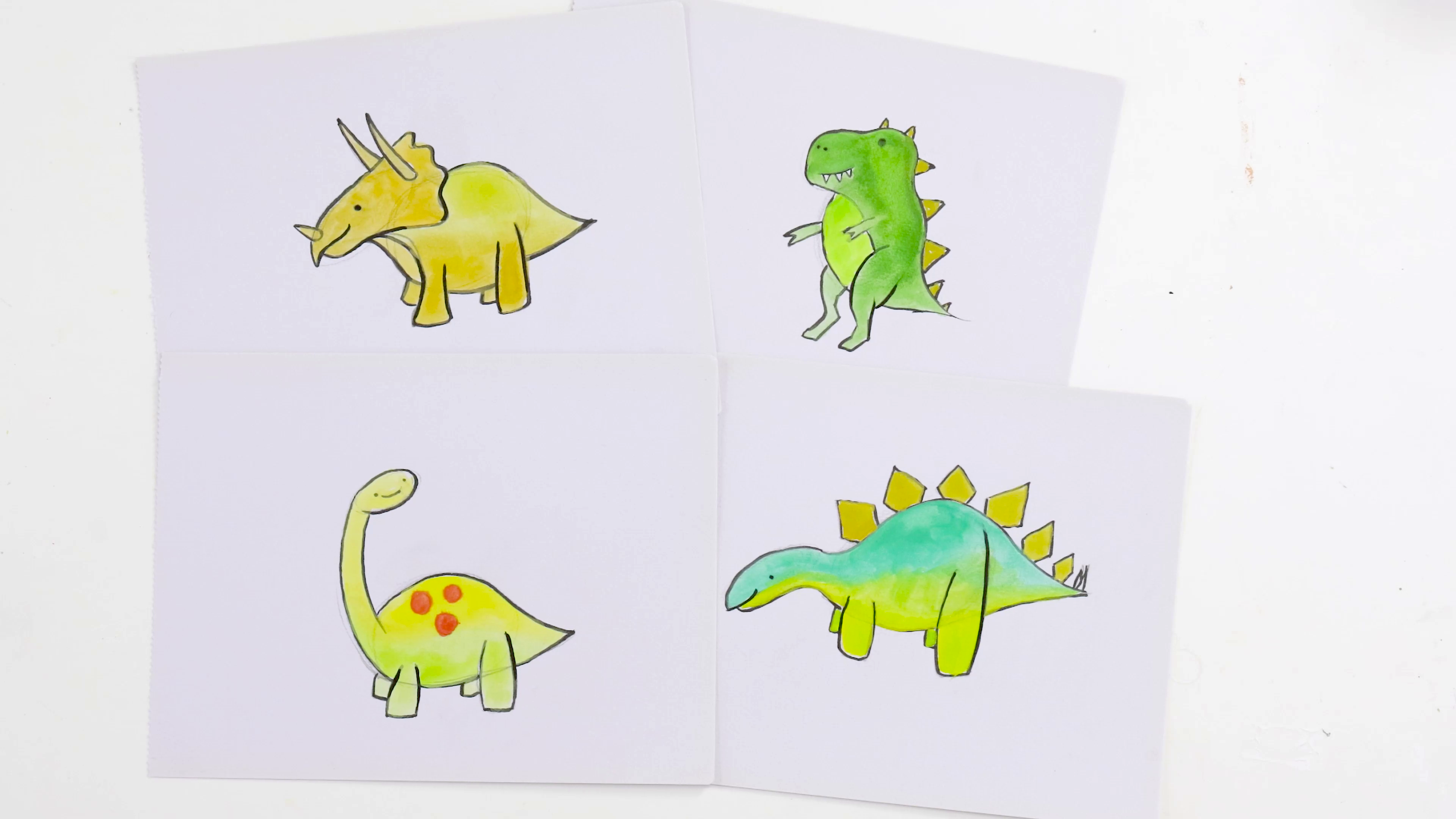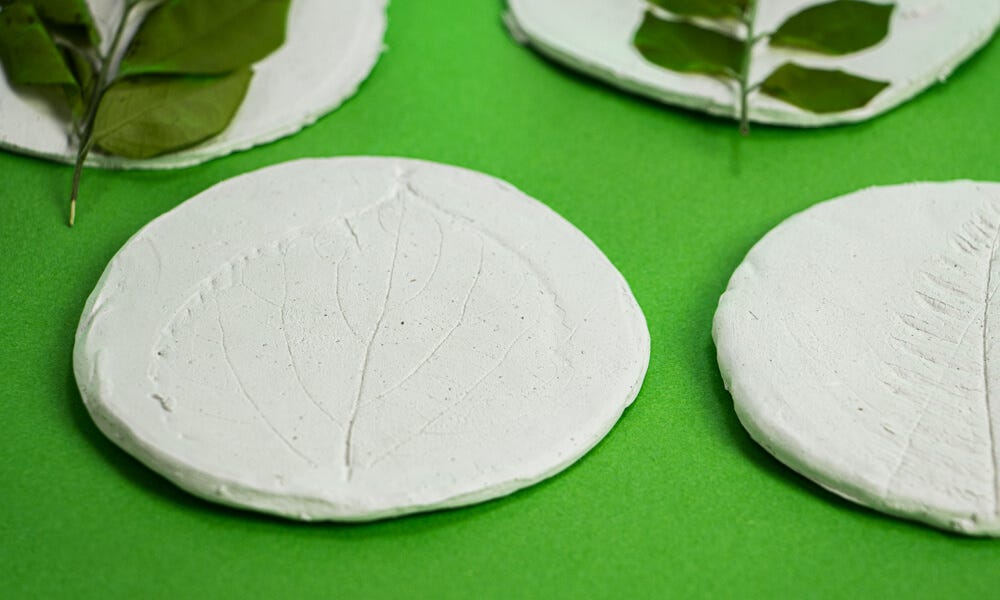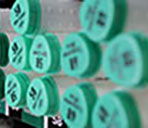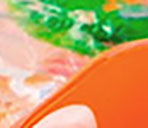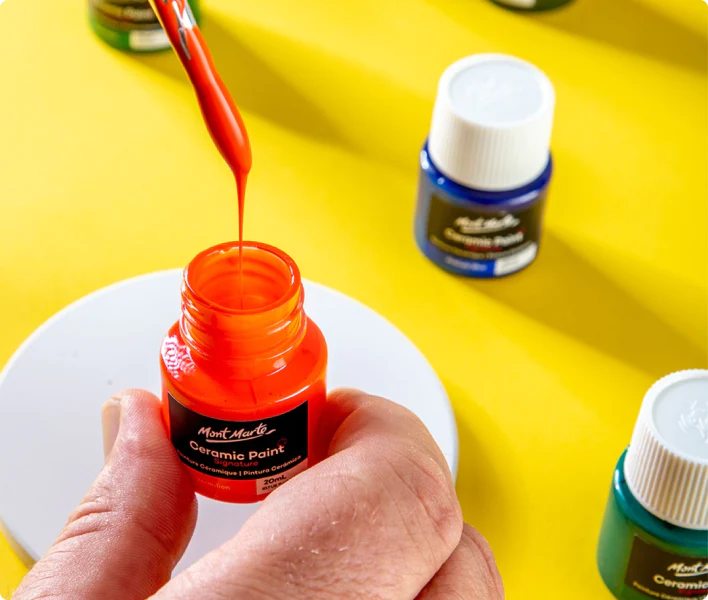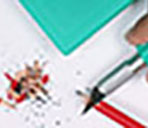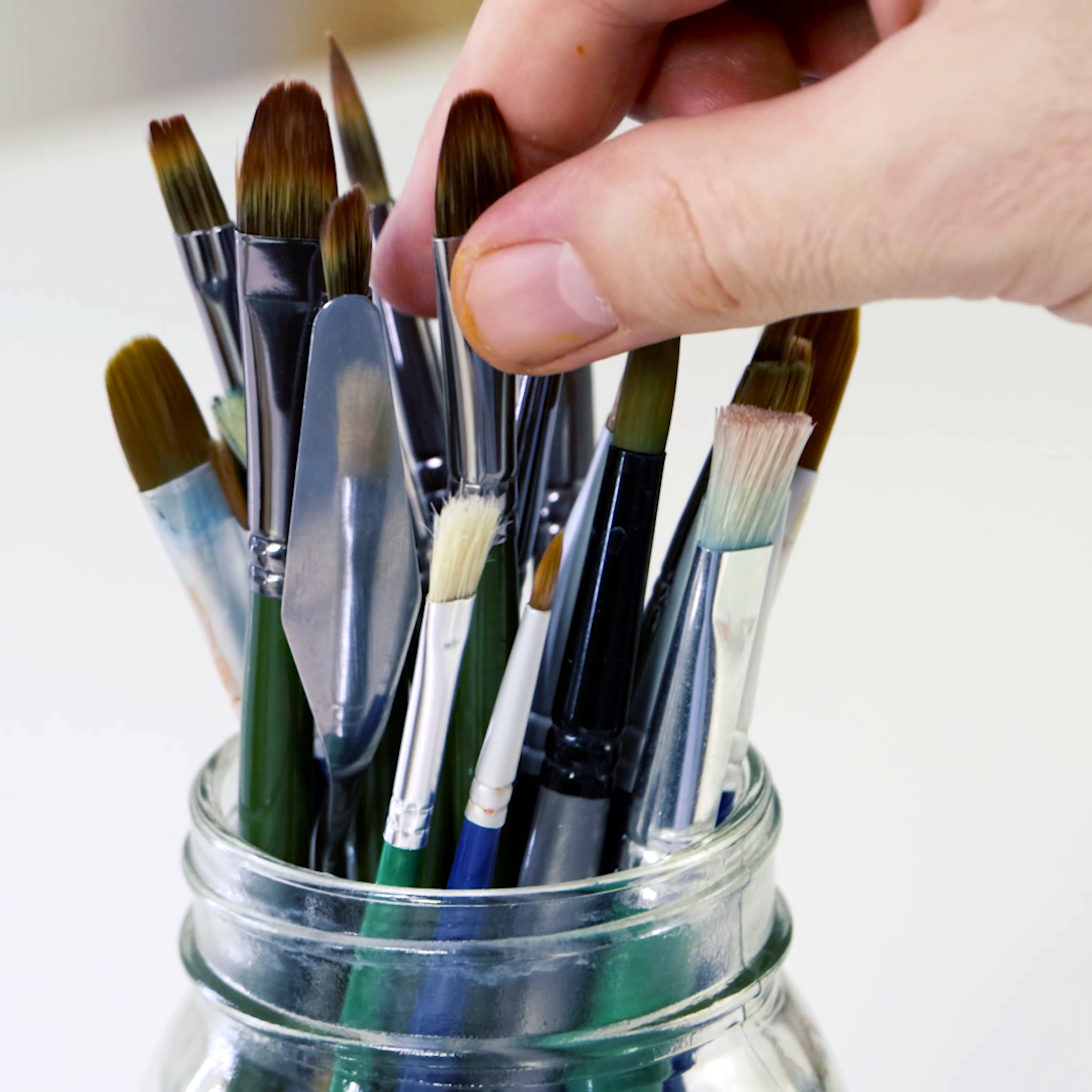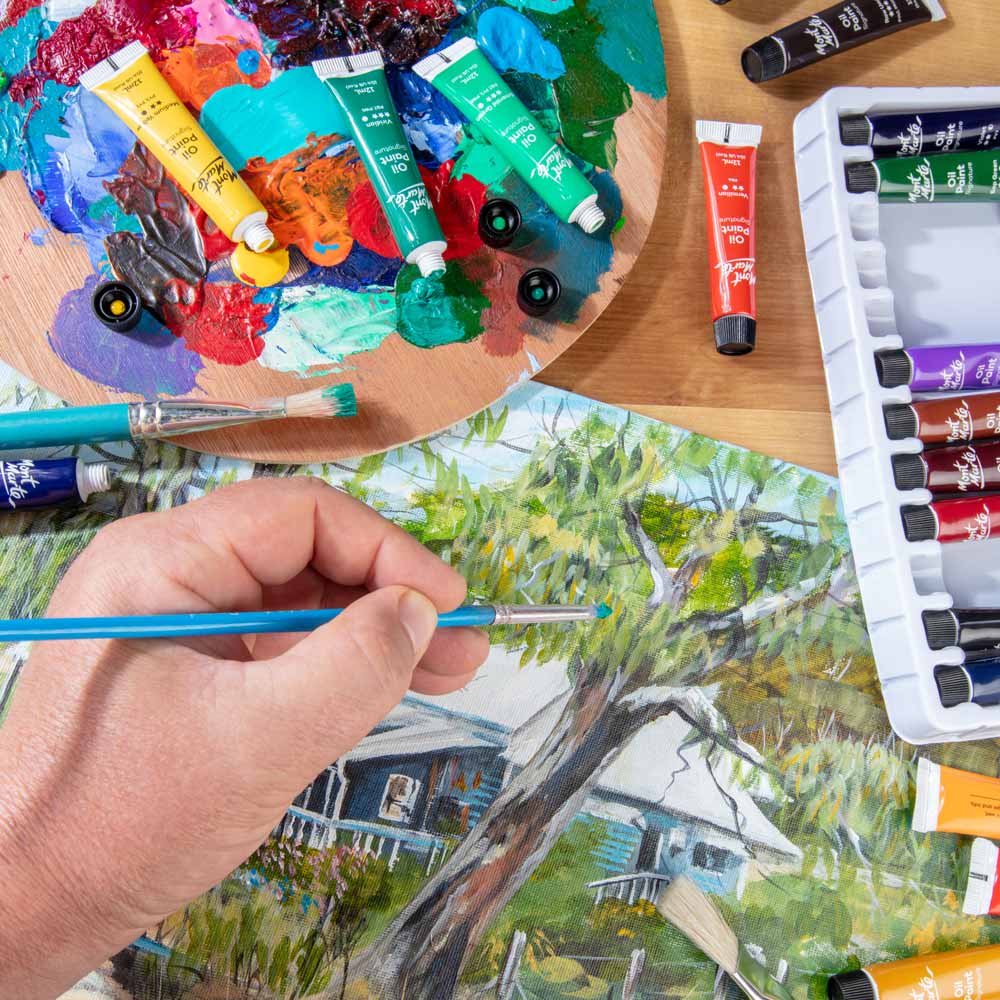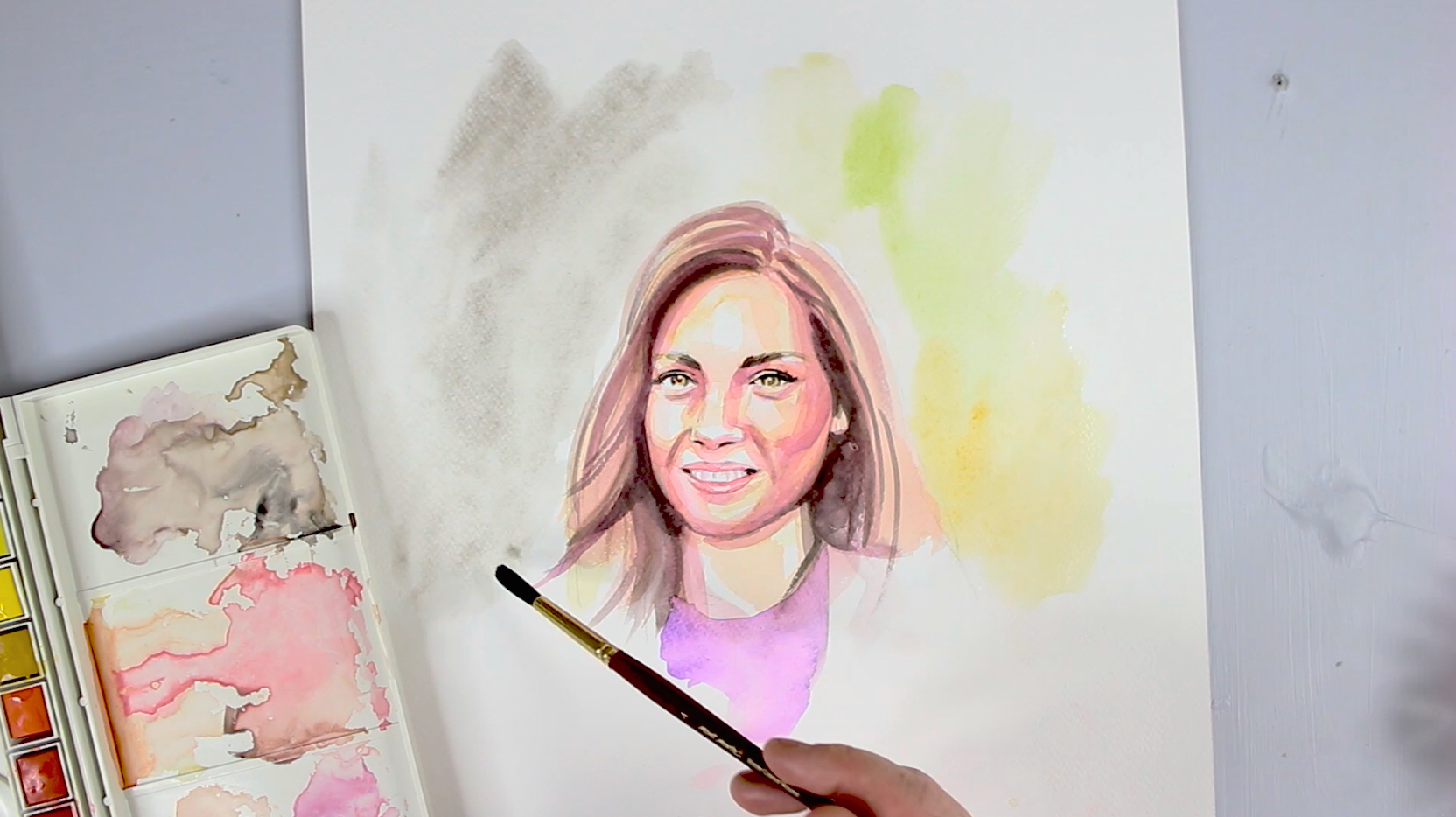Find out what paint brush to use so you can create with confidence! We’ve got all the info you need to explore painting with brushes made for different mediums, techniques, and styles. Let’s get into it!
1. What are the different kinds of paint brushes and their uses?

Art brushes come in various shapes and sizes, made with specific techniques and effects in mind. Most mediums have brushes in the following shapes:
- Round Brushes: These versatile brushes come to a fine point, making them ideal for detailed work, lines, and curves. They can also be used for filling in smaller areas and the bristles are easily manipulated.
- Flat Brushes: With their square ends, flat brushes are great for bold, strong strokes, filling large areas, and creating sharp edges. Use them to spread colours evenly, create broad strokes, and paint fine lines.
- Filbert Brushes: Featuring a rounded edge, filbert brushes are ideal for blending and creating soft, rounded edges. They mix together the characteristics of round and flat brushes so you get the best of both worlds!
- Fan Brushes: These brushes have splayed bristles and are used for blending, smoothing, and creating textures like foliage and grass. They’re also great for feathering and softening edges, with gentle pressure and application.
- Detail Brushes: Tiny and precise, detail brushes are great for fine lines and intricate work so you can add finishing touches to your masterpiece. Give yourself more control with a fine point!
- Mop Brushes: Large, rounded brushes that hold a lot of water and paint, ideal for large washes and sweeping strokes. Great for creating soft, blended backgrounds in watercolours.
- Angled Brushes: With their slanted tips, angled brushes are great for creating sharp edges, precise lines, and filling in tight corners. They’re versatile for both detailed work and broad strokes.
2. What’s the difference between oil and acrylic brushes?
Oil Brushes: typically made with natural bristles, such as hog hair, which are excellent for holding and distributing the thick consistency of oil paints. They usually have long handles, so creators can paint from a distance and apply sweeping strokes. Natural bristles are great for smooth application and can handle the slow drying time of oils without losing shape. Taklon bristles can also be used for oil brushes, as they’re flexible and resilient when using solvents.
Acrylic Brushes: often made with synthetic bristles like taklon, these brushes are durable and resilient to the compounds found in acrylic paints. Synthetic bristles are less likely to degrade and are easier to clean, making them ideal for acrylics. These brushes come in both long and short handles for all sorts of different painting styles and techniques.
3. What types of paint brush hair are there?

Natural Bristles: Made from natural animal fibres like hog, sable, goat, or squirrel, natural bristles are softer and have a nice spring, which makes them excellent for oil painting. Our Premium watercolour mop brushes also come with mixed bristles (both synthetic and natural), while our Artiste mop brushes are made with squirrel hair. Natural bristles hold more paint and water, releasing it evenly, but they require more care and generally cost a little more to make.
Synthetic Bristles: Made from man-made materials like taklon, nylon or polyester, synthetic bristles are more durable and versatile. They’re affordable, easier to clean, and can be used with a bunch of different mediums including acrylics, gouache, inks, and watercolours. For beginners or those on a budget, synthetic brushes are a great option to start with!
4. What brush to use for watercolour?

Watercolour brushes are designed to hold a lot of water and paint, releasing it gradually to create soft washes and colour layering. We have brushes made especially for watercolour, to make the selection process a little easier. There’s a few different brush shapes that are ideal for watercolour techniques, including:
Round Brushes: These are the most versatile watercolour brushes, used for everything from detailed work to broad strokes. Essential for any watercolour brush collection!
Flat Brushes: Ideal for washes and covering large areas quickly. They can also create sharp edges and straight lines. These come in a huge range of sizes so you can work on all sorts of paper dimensions.
Mop Brushes: Large, rounded brushes that hold lots of water and paint, perfect for large washes and sweeping strokes. These are a personal fave of in-house artist, Joe! Just manipulate the bristles into a point for fine lines.
Detail Brushes: Small, pointed brushes designed for intricate details and delicate lines. Super handy for outlines!
5. How to take care of paint brushes?

Proper care not only extends the life of your brushes but helps you get the most out of them for your artwork.
Oil Brushes: Clean them first with a solvent like turpentine or mineral spirits to remove the oil paint. We recommend decanting the solvent into two or three glass containers so as the solvent becomes discoloured with paint, you can move on to clean solvent! Dip the brushes in solvent and then wipe them on a paper towel or rag and repeat until clean. It’s okay if the bristles have some staining, as long as they aren’t leaching colour.
Once you’re done with the solvent, then wash them with soap and water, reshaping the bristles. You can use conditioner to keep the bristles in place and condition the bristles in between uses. Simply wash it off before their next use! You can check out the full process in our how-to video for oil brush care.
Acrylic Brushes: Rinse thoroughly with water immediately after use to prevent the paint from drying on the bristles. Once acrylic paint dries, it’s hard to budge so always clean your brushes right away. Wash with soap and warm water, then reshape the bristles and let them dry.
Watercolour Brushes: Watercolour is nice and easy! Simply rinse your brushes with water after use. For a deeper clean, use mild soap and water. Reshape the bristles with your fingers and let them dry.
6. Which brush type works with the most art mediums?

When it comes to versatility, synthetic brushes are a great choice for creators of all skill levels. Made from materials like taklon and nylon, these brushes are super durable and can handle all types of paint, including acrylics, watercolours, inks, gouache, and even oils. They’re also simple to clean (provided you don’t let paint dry in them) and they aren’t damaged easily by solvents. If you’re into mixed media, synthetic brushes are your friends!
They’re also budget-friendly and typically a little cheaper than comparative natural hair brushes, making them a solid pick for beginners and pros alike. Thanks to advances in the art world and technology, synthetic brushes now perform pretty much just as well as natural hair brushes (in some cases better), offering excellent results. The main difference is their holding ability, as natural bristles are a touch more absorbent.
7. Why do some brushes have long handles and others short?
The handle length of a brush is made to match the style of painting and studio setup. Long handles are designed for easel painting so artists can stand back from their work and make broader, sweeping strokes with more arm movement. This is especially useful for larger canvases and projects.
Short handles are great for detailed work and painting on flat surfaces, giving you more control and precision. They’re often used for smaller canvases and close-up work where fine detail and a steady hand is required.
8. How to store paint brushes?

Proper storage is crucial to maintaining the shape and quality of your brushes. Luckily, it’s super simple so anyone can keep their brushes in top condition!
Start by always cleaning your brushes thoroughly, right after you’re done with them. Don’t let paints dry in the bristles as this can permanently damage the brush. You can also apply conditioner to the bristles to reshape them, remembering to rinse it off before the next use.
Allow your brushes to dry flat, so the bristles have no pressure on them and water isn’t sitting in the ferrules. Prolonged water exposure can make wood weaker, so keeping them flat until dry makes sure liquid doesn’t pool.
Store your brushes with the bristles facing up or keep them flat horizontally. Avoid leaving brushes bristle-down as this can deform the bristles and change their shape.
We hope you’ve learned a couple of handy hints for picking the right paint brush for you! If you do get painting, #montmarteart or tag us @montmarteart on Instagram or Facebook. We’re excited to see what you create!
For art ideas, explore our Projects and How-tos. If you’re looking for more answers to commonly asked questions, jump into our FAQs collection.
Stay up to date with the latest Mont Marte news, info, products, projects, and more by subscribing to Creative Connection down below. Simply enter your email to get loads of free art lessons and inspo sent straight to your inbox.


